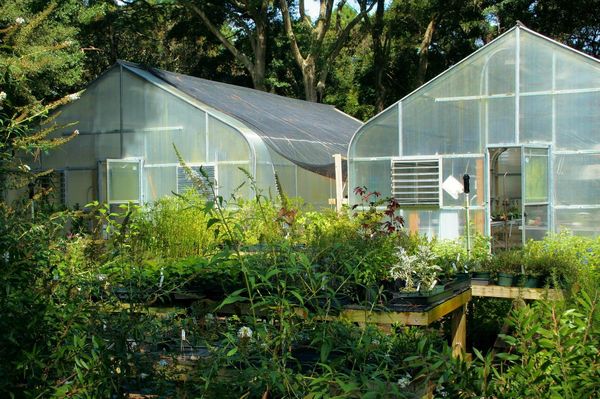- Controlling the hours of light your cannabis receives indoors allows manipulating flowering periods and collecting the crop at the time the grower considers most appropriate.
- Outdoors, light deprivation in greenhouses has also become an essential technique for optimum yields in different crops.
- Find here below all the secrets about this forced flowering method adapted to the care of marijuana.

Deprivation of light, i.e., handling and limiting the hours of light plants are exposed to, is an increasingly popular technique among outdoors cannabis growers seeking to control flowering cycles regardless of the natural cycle of the sun. However, playing with the elements is not as easy as it may seem at first glance.

Any marijuana grower knows that cannabis plants flower when the days get shorter and nights get longer. This naturally occurs when summer gradually gives way to autumn. Although most growers skilled in indoor growing have already spent much time choosing exactly the hours of light to which their growing marijuana is exposed, cultivating plants in a greenhouse cannot always control natural light. So it is necessary to "trick" the plants to make it look as if we were entering the end of their life cycle and thus have them produce as many flowers as possible.
For those who have not yet dared to see how this works, we will explore how to best put this technique into practice. Manually or automatically, this procedure consists in limiting the exposure of plants to light. The purpose is to establish two cycles of 12 hours (12 hours dark and 12 hours light), that will make the plant go from the growth stage to the flowering one.
The absence of the spectrum of red light at night allows for the accumulation of phytochrome (a protein present in plant organisms, whose function is to act as a photoreceptor) which, once it reaches a certain threshold, triggers the plant to change to the flowering phase. This lasts between 45 and 65 days, depending on the strain (between 45 and 75 and 80 days for the later sativa); after that, cannabis will be ready to be picked.
How to cover the plants to achieve this?
Those who can afford higher investment in cultivation can buy adapted greenhouses, specifically designed to display some canvas covers, which become opaque at the desired time by a timer. If you already have this system, then you only need buy some very large covers and install them. Although these options are not cheap, they are the best alternative, since automating the process eliminates many chances for human error.
However, those who do not have the money for such an investment can also use this technique with their plants: it only takes to be as conscientious as precise. Without great means, tenacious and responsible growers, who compromise to cover their little hothouse every day at the same time, will control the flowering of their marijuana. For this, they can choose from different types of opaque tarps, which, together with rail-shift systems, can facilitate their movement to cover and uncover the plants without much effort.
Of course, all of them will have to have the same care and be fully sure that their plants do not receive any light during the twelve hours they must remain in complete darkness. Once the process has started, even the smallest beam can have a disastrous effect and make the plant change its state and return to the growth phase, thus losing its rapid progress and vitality or, what is even worse, becoming hermaphrodite due to stress.
Some tips you should consider
Some experts say that for plants to reach their highest quality, the cover must not be left on overnight. It is best to remove it once it gets dark and allow marijuana to flourish in the shelter of the stars and experience the real dawn. Growers choosing to leave the tarps on overnight should be especially careful with ventilation, in order to prevent excess heat and moisture that could cause plants to suffer fungi. In that case, you'd better have air inlets and outlets, although there are some specific methods (such as breathable tarps) which, despite diminishing brightness, allow the breeze to keep flowing.
Also remember that, as with indoor cultivation, not all varieties react the same way to light deprivation: some will grow more strongly and others will present problems as the already mentioned fungi. There are even some varieties of sativa which, with only 10 hours of darkness, can begin to flourish. Finding the best cannabis strain and experience to achieve the best results will be part of a grower's learning process. This could mean that, no matter how hard this may be at first, you would have to discard the idea of growing some of your favorite varieties. If the plant does not work, it is best to try other genetics.

Main benefits of light deprivation in greenhouses
But why is this technique becoming so popular? The answer is in the mix of nature and the manipulation of the elements:
- It maximizes space and saves time. In the world of agriculture, as in other sectors, time equals money. And in a highly competitive marijuana market, understanding this simple fact has led many outdoor growers of medical cannabis to use light deprivation as a means of increasing their annual crops, particularly during the summer months, and hence get a quick return on investment. In addition, due to the reduction of vegetative growth, growers can plant their crops closer together, thus maximizing performance per square meter. And so harvest time will arrive months sooner than it naturally would.
- It has the advantages of indoor cultivation, without its cost. As in indoor plantations, the grower has control over harvest time. But without the usual electricity expenses associated with indoor cultivation, because sunlight is free. Now that the ban is coming to an end in many parts of the US, growers should explore less costly and more productive techniques. And many believe that deprivation of light in greenhouses is the future of low-cost cannabis.
- Safety and adapting production to demand. In the case of large-scale growers operating in countries like Canada or the United States, this means that they can choose to have plants at the time of year when the demand is higher and the product can be sold faster. When it comes to small farmers using cannabis for personal consumption, the possibility of playing with timings can allow them to have the plant ready whenever they wish, collect more crops a year without having to accumulate grass from other seasons and even, to ensure that the control of the daylight hours avoids problems, such as going back to the growth state of plant.
- Outdoor quality with low environmental impact. In addition, greenhouse plants are protected (from inclement weather or, with the right material, from the eyes of the curious), but without the need for carbon filters, extractors or other necessary equipment for growing indoors. Then there is the natural side. Compared to indoor plantations, deprivation of light outdoors has a much lower environmental impact and maintains the advantage of outdoor cultivation: the plants are nourished by the sunlight, which many consider that provides an extra touch of quality.
For all these reasons, those with a greenhouse who decide to take a further step in controlling their crops can find in this technique, combined with outdoor cultivation, a great ally to obtain the best cannabis. You just have to get down to work and follow all these recommendations.



Comments from our readers
There are no comments yet. Would you like to be the first?
Leave a comment!Did you like this post?
Your opinion about our seeds is very important to us and can help other users a lot (your email address won't be made public).